The members of the Osage Indian tribe became rich when the oil was discovered under their reservation in Oklahoma in the early 20th century. The Osage tribe became dominant in the region in the early 19th century, and the majority of their descendants live in Oklahoma. After the discovery of oil, their members suffered manipulation and numerous murders by whites eager to take over their newly discovered wealth. In 1923, when more than two dozen people of Osage tribe were murdered, the case was assigned to the FBI. It was among the first major homicide investigation for the FBI.
The killings started in May 1921, and the first victim of the massacre was 25-year-old women Anna Brown. Her decaying body was discovered in a ravine by the hunters. She had been shot between the eyes. The same day Anna’s cousin Charles Whitehorn’s dead body was found, and two months later, her mother, Lizzie Kyle, was also murdered. These killings were not confined to family, and another woman was found dead on her lawn. A sympathetic local lawyer was also thrown from a speeding train. The estimated death toll of Osage member was over a hundred, but some of these killings were not reported or covered up. The FBI estimated 60 Osage Indians died violent or suspicious deaths. The FBI found several murders in one family, committed by a gang led by William “King of Osage Hills” Hale. His goal was to gain the oil royalty rights and wealth of several tribe members, including his nephew’s Osage wife, the last survivor of her family. Most of the murders remained unresolved.
To prevent further crimes and to protect the members of the Osage tribe, congress passed a law prohibiting non-Osage from inheriting headrights from Osage, who had half or more Native American ancestry in 1925. In 2011, the US government settled with the Osage for $380 million, which was the largest settlement with a tribe in US history.
Here below are some photos of the members of the Osage Indian tribe members.
#1 Mollie Burkhart, right, with her sisters Anna and Minnie. They were part of the Osage Native American tribe, who were killed one by one in a murder mystery.
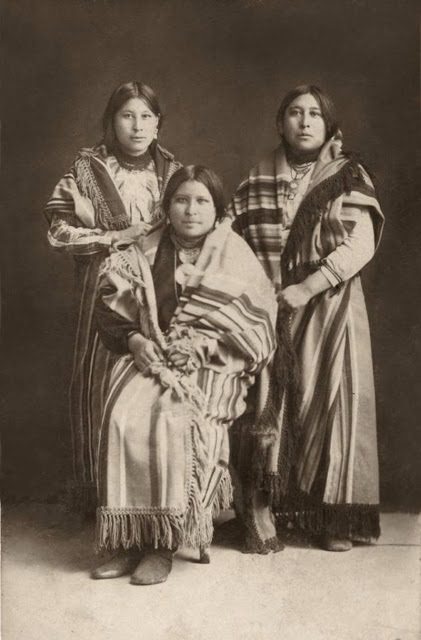
#2 Mollie became a prime target after it was revealed her people were living on land where there was oil underneath.
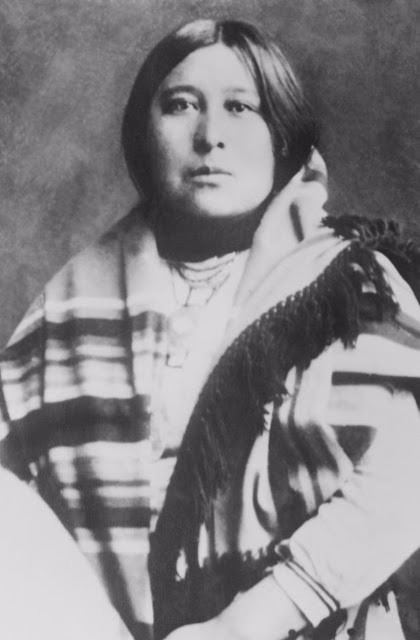
#3 Chief Bigheart ensured that the wealth of the Osage would stay only among tribe members.
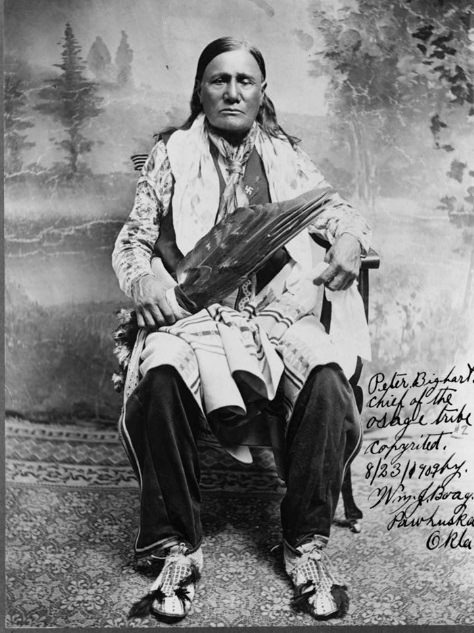
#4 Anna Brown was one of the first victims of the Osage killing spree.
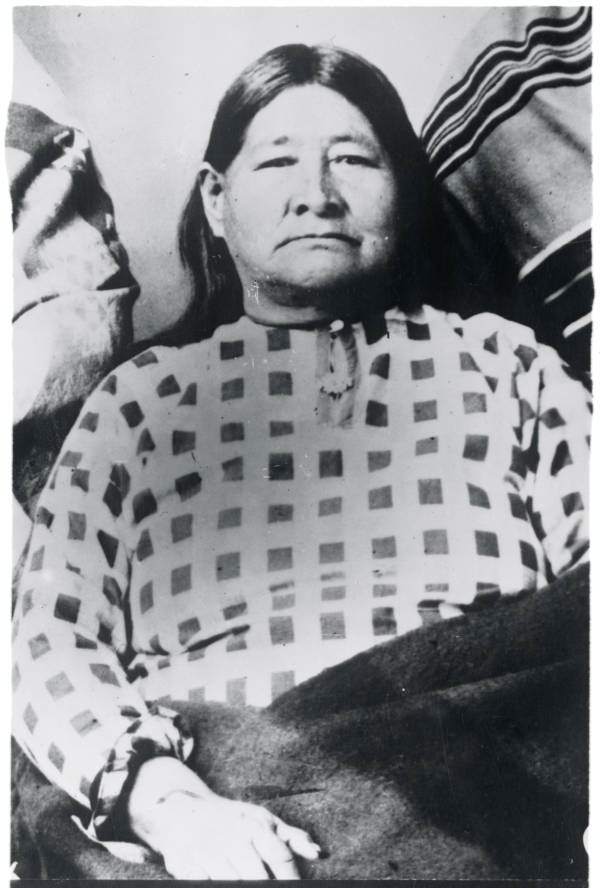
#5 The Osage tribe were among the richest people in the world and often rode in chauffeur-driven cars.
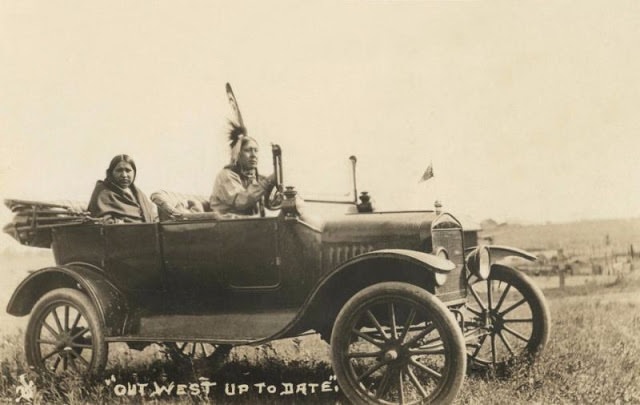
#6 The fourth sister Rita with servant.
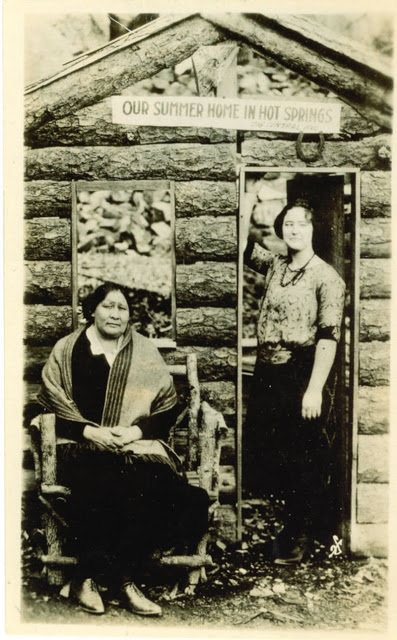
#7 Another woman of Osage tribe who killed in 1921.
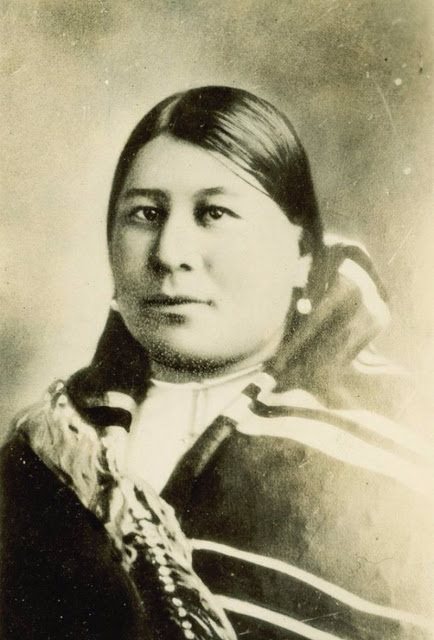
#8 The Osage nation native Americans were among the richest in the world but were eventually forced into a new reservation.
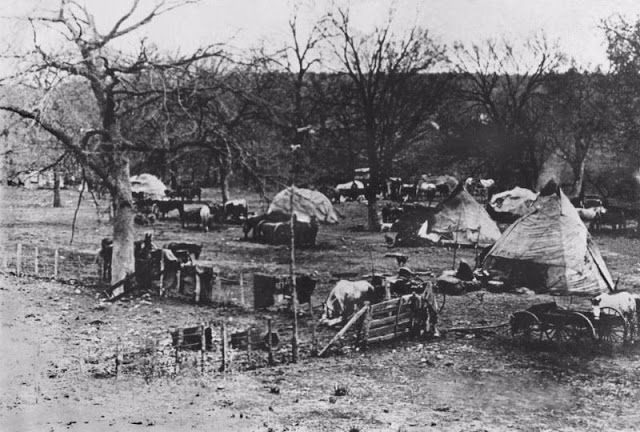
#9 The ravine where Anna Brown’s body was found.
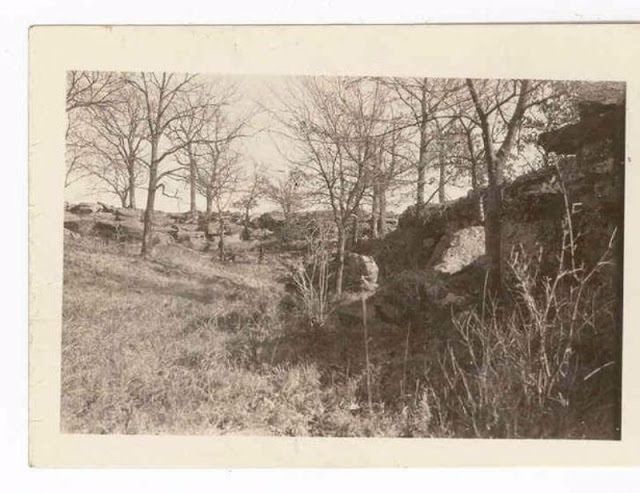
#10 The Al Spencer Gang jokingly hold up others in their crew. All gangsters in the local area were under suspicion of carrying out the murders.
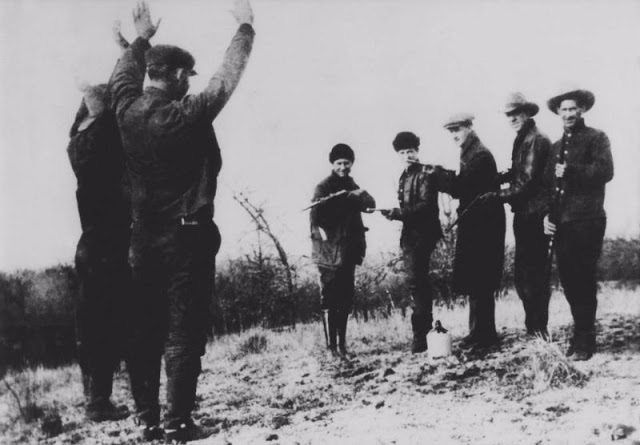
#11 Lawmen seize illegal moonshine in Osage County in 1923 at the time of the murders.
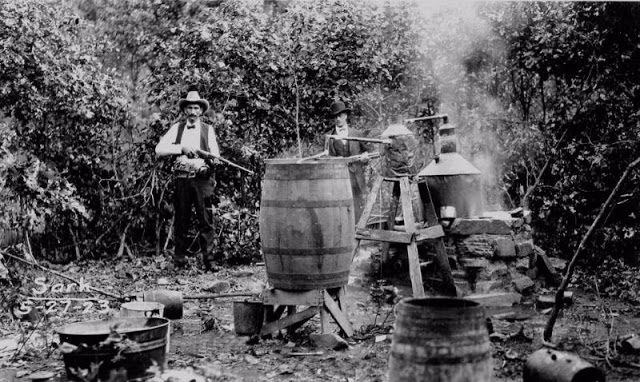
#12 William Hale competing in a roping contest when he was a cowboy.
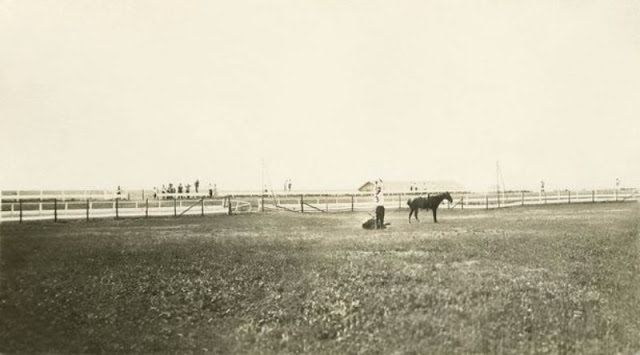
#13 A pair of Osage women in 1921.
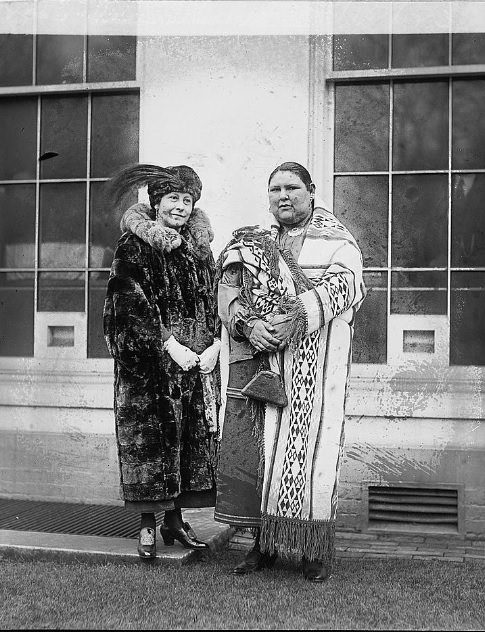
#14 The Osage Council and tribal representatives in Washington D.C.
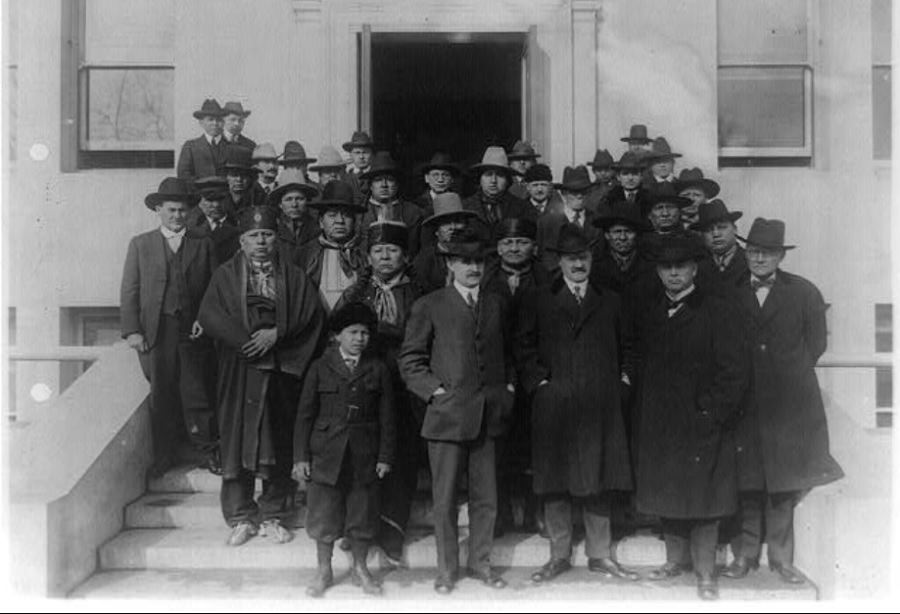
#15 Rita Smith whose death triggered a federal investigation.
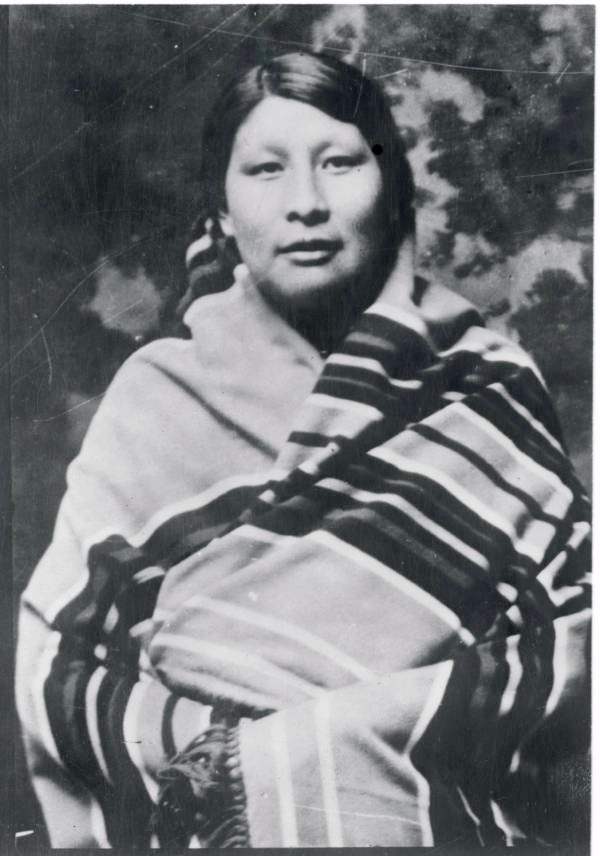
#16 A trial document connecting the various murders back to the ringleader of the murder spree.
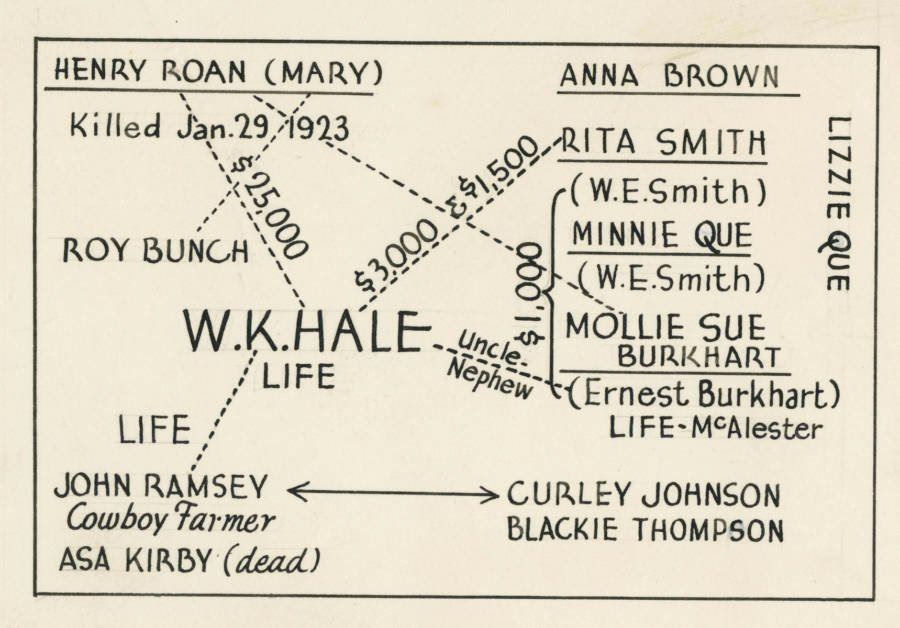
#17 FBI Chief J. Edgar Hoover, right, brought in Tom White, left, a stetson-wearing, Texan lawman to solve the case.
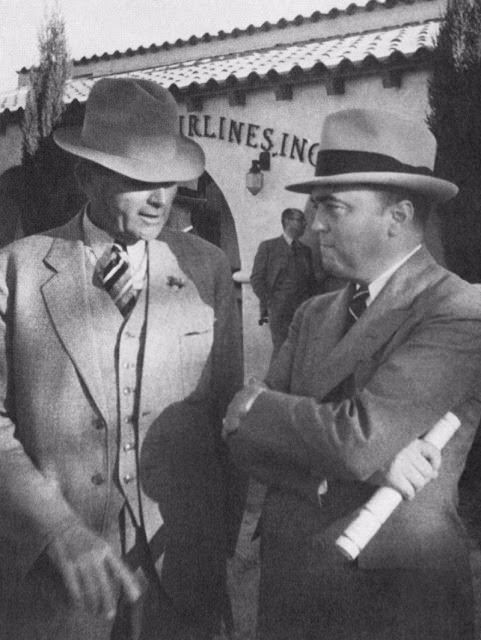
#18 The FBI team included a former Texas Ranger who was said to be sutied for ‘any element of danger’.
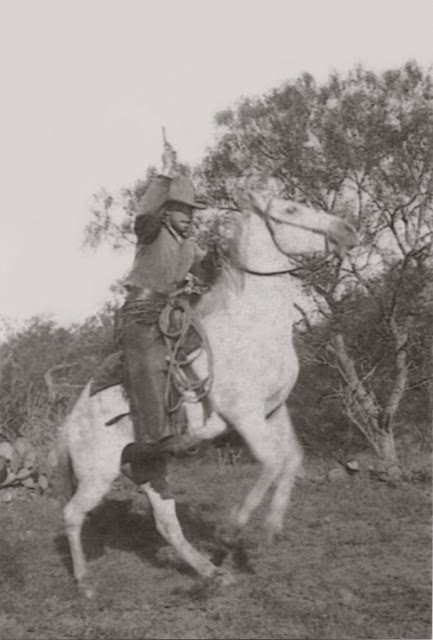
#19 Killer Bill Hale.
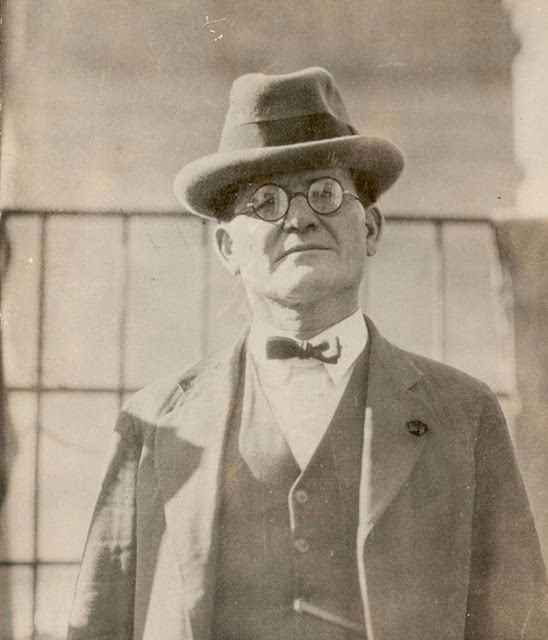
#20 Eventually, Detective Tom White traced the start of the crimewave to Anna Brown’s brother-in-law, a white man called Ernest Burkhart and his domineering uncle Bill Hale.
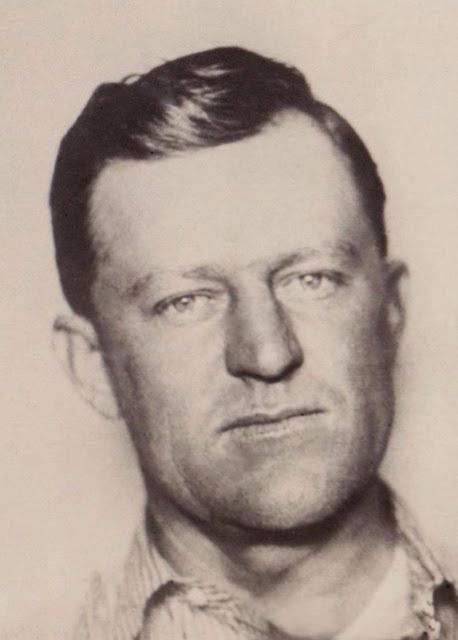
#21 Devil in the detail.Part of a panoramic 1924 photo of the Osage tribe before this left-hand section with evil Bill Hale, circled, was removed.
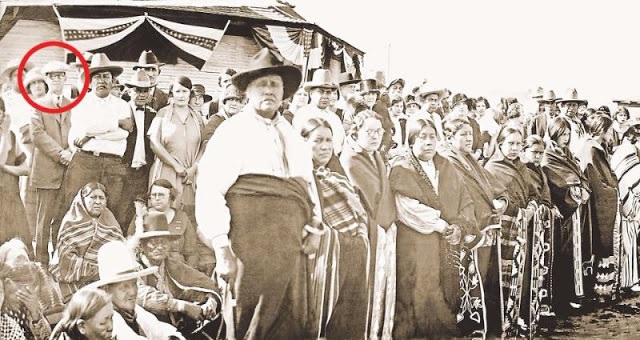



It is horrifying, yes. Is that surprising? I don’t think so. It is a microcosm of US relations with NAs.
Greed and jealousy are microcosms of humanity.
It was less than 100 years ago. The US ended segregation 65 years ago. When it comes to issues like this, the US is different from the rest of the developed world.
Slavery existed in the US for about 85 years. To end the Civil War, thousands of American men gave their lives. There has been a booming African solace trade in the Middle East for over 1400 years. There is a sex slavery of African men, Yazidi girls are traded for pistols as sex slaves, and foreign workers are held captive as domestic workers in booming ME cities.
Getting rich requires killing and stealing. It’s the American way.
They wanted to secede in order to nullify existing treaties with natives. Our first act was to conquer everything West of us, killing the indigenous and converting much of their land into slave plantations as soon as we could. In the end, liberty was reserved for the landed gentry.
America was built by and for the cruel. To this day, the same families that landed and pillaged natives continue their bloodline, fooling the poor and dividing the people through their corporate backing.
It was a tactic that our leaders learned from the British Empire. If you can convince poor whites that minorities are the real cause of their suffering, the elite will remain protected. I can’t believe how effective it is.
In the late 1800s, there weren’t that many minorities in England, and the ones that were there were mostly eastern European whites. Racism was more prevalent against whites than against darker Mediterranean. Rather than anything else, they were more welcoming to moors because of their incursions into France.
I’m referring to the US learning from the British Empire about how to divide populations so that colonization can be successful. Minorities are more of a US concern. I’m talking more about the English conquest of Britain and their colonies (such as dividing Indians against each other, or between Muslims and Hindus, or exploiting the caste system). Like a sleight of hand, it redirects rage away from the aristocracy. As it has been some time since I read about early propaganda such as this, I am not able to provide any specifics, but I recall reading about it when Irish indentured servants and African slaves and freemen became too close for comfort, including mixed families becoming more common than ever before. The ability to persuade whites on the bottom to target their frustration at the poor and even enslaved blacks rather than the elite became a key tool in preventing a revolution.
By the time the US was founded, it already had a pretty good understanding of how to control the masses, which evolved over time.
The US government wouldn’t do that, it’s the land of the free
That’s a very pessimistic and two-dimensional view of history. The Cherokees won their case against Removal at the Supreme Court. Did you know that? Did you know that 97 representatives voted against the Removal Act? Did white neighbors shelter and provide medicines and provisions to the people who would later become the Eastern Band of Cherokee during the hideout? Through buybacks and trusts, did white people help the tribe regain land? Georgia’s governor and Andrew Jackson were jerks who acted almost unilaterally. As always, there were bad people. But to portray all white Americans as cartoonishly villainous is inaccurate and doesn’t give credit to the people who fought back against evil, or to the tribe’s ability to use the legal system effectively. It is worth noting that Native tribes are still here and continue to be resilient. For representation and advancement, Cherokees continue to work within the boundaries of the legal system.
Martin Scorsese is developing a film on this subject.
There was a bit about this in the old movie The FBI Story with Jimmy Stewart. It’s a great old movie, even though I’m sure a lot of it was hokum because J. Edgar wouldn’t ever reveal the truth about anything.
PrincessToot I am glad that this issue is finally getting the attention it deserves as a member of the Osage tribe. History isn’t widely known for a lot of reasons. There has always been horrific racial violence and injustice at the core of the USA, yet it pats itself on the back for being free and fair.
The public schools are whitewashing history. This is all information I’ve acquired outside of school.